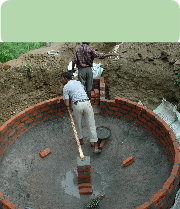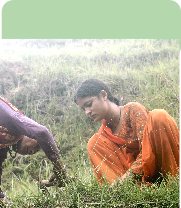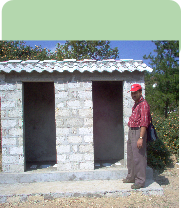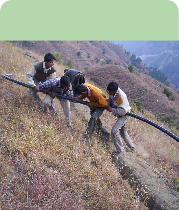
The plan consists of four main programmes outlined below which have already delivered tangible results. However, one of the most significant achievements is the increased community awareness on environment, sanitation, renewable energy and management of natural resources. In addition, the formation of Village Development Committees, and Self Help Groups has meant that this Watershed plan is being run by the people at their own initiative and capacity. They’ve successfully proved that positive change is possible, if people are willing to work together at the community level.


With two active nurseries, the community planted 59,507 saplings in the villages, with an on-target survival rate of 44%. In addition, a social fencing system was promoted to strengthen existing regulated grazing systems. The result has been a significant increase in grass growth across the area, providing much-needed fodder for livestock.
The availability of firewood in this region was at crisis levels. Women and children were forced to walk around 3km daily to collect wood and almost all households were turning to LPG or Kerosene. During the period 72 families installed a bio-gas unit, representing over 53% of the whole community. The bio-gas units not only provide a constant supply of manure for farmers but are also estimated to save Rs 1,499,938.9 annually.

In order to prevent contamination of the watershed, sanitation units were promoted across the valley. Out of 136 households, 91 installed sanitation units, representing 67% of the entire community. 68 of these units were constructed by Grassroots, the remainder were installed by village blocks or by individual families.

To boost crop output, irrigation systems were improved by laying 4015 meters of underground piping, connected to large storage tanks. This underground method has already proved better than the traditional open kuccha-nalas which often caused soil erosion. Regular access at adequate quantities has also seen immediate benefits for farmers.

Community Forestry
Renewable Energy
Environmental Sanitation
Upland Irrigation






